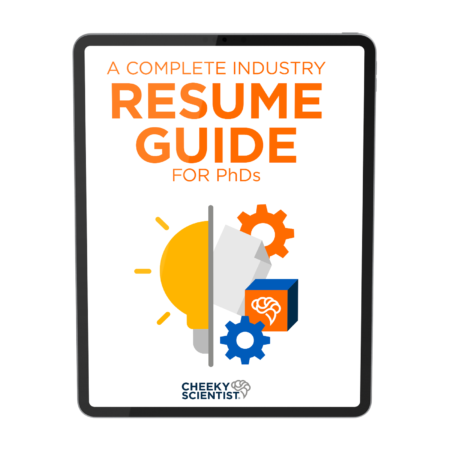What Is Open Innovation And Why It’s The Future Of The Biotech Industry

There were many reasons why I chose to leave academia and transition into industry.
At the time, I could not care less which company I worked for or what the company stood for.
Should I work at a start-up, or at a big pharma company?
Should I work in R&D at the bench, or as an analyst away from the bench?
Who cares?
Just give me a job.
I wanted out of academia and I wanted out yesterday.
It wasn’t until much later that I realized how important it was to think strategically about what companies I should target during my job search and why.
During my first industry interview, I met with the CEO of a start-up company and we began to ‘talk shop,’ or talk about current industry trends.
But I had no idea how to talk shop.
I knew nothing about the CEO’s company structure, the current landscape of their market, or where the company or the biotechnology field in general was heading in the next 5-10 years.
So, I just smiled and nodded.
I had nothing to say.
I couldn’t even think of a relevant question to ask.
It was a wasted opportunity.
I began to set up informational interviews with other industry professionals and soon learned that it was in my best interests to know what happens ‘behind the scenes’ in industry.
As I set up more and more interviews, I learned about things like mergers and acquisitions.
I learned about internal restructurings.
I learned about things like organizational behavior, business ethics, and company culture.
Over time, I realized that I wanted to choose a company to work for that knew where the market was heading and how their company would stay relevant.
I wanted to work for a company that had staying power and would still be in business 5-10 years down the road.
I took all of this as a wake-up call and prioritized staying up-to-date on current industry trends.
By the time my next industry interview and site visit came along, I was prepared.
During the interview, I was able to communicate intelligently about the company’s structure and management activities.
What Is Open Innovation And Why PhDs Should Care
In the last decade, the biotechnology and biopharmaceutical sectors have been influenced by a number of new advancements leading to a major shift in the culture of innovation.
Financial pressure, growing cost of innovation, and increased competition from emerging markets has pushed industries to look for new ways to reduce cost while sustaining innovation.
As a result, there has been a shift toward an Open Innovation (OI) model versus a traditional, or closed, R&D model.
OI is where organizations look outside the confines of their own capabilities to source ideas, technologies, and intellectual property (IP) in order to boost their R&D success rate.
In a major contrast to a traditional closed model of innovation, OI favors more extensive sharing of IP and R&D capabilities between collaborating organizations.
An analysis by the consulting firm Deloitte on innovation models in industry found that large industry organizations pursuing an OI model were 3X more likely to achieve late-stage success in product development compared to those relying on a traditional, or closed, innovation model.
Imagine walking into an interview and being able to intelligently discuss why open innovation is a positive cultural shift for the company you’re applying to and to the biotechnology and biopharmaceutical industries as a whole.
The hiring managers on the other side of the table would be both surprised and impressed.
Their preconceived notions of you being a narrow-minded academic with no business knowledge would immediately vanish and, as a result, you would be in the driver’s seat for the rest of the interview.

Why Open Innovation Is Expanding In Industry
A better understanding of complex biological processes over the last two decades has made it possible for companies to innovate faster and with a relatively smaller infrastructure.
Breakthroughs that were only possible through a massive venture over a long period of many years by very large organizations can now be done by smaller institutions in a fraction of the time.
Knowing how and why this trend is occurring is an important part of positioning yourself as a top job candidate in industry.
Knowledge of OI and why OI is expanding, along with deep knowledge of other current industry trends, will help you get hired over other job candidates.
Here are 4 reasons why open innovation is expanding in the biotech and biopharma sectors…
1. An increase in patents expirations.
A large number of so-called blockbuster drugs have either reached or are about to reach the end of their patent terms.
As a result, more and more generic drugs are capturing this blockbuster market share.
According to a report by EvaluatePharma, between 2015 and 2020, the total value of revenue at risk as a result of patent expiry is expected to be around US $197 billion.
Noticeable inclusions in this list are Bristol-Myers Squibb/Otsuka Pharmaceutical’s antipsychotic drug Abilify and the insulin treatment Lantus from Sanofi.
GlaxoSmithKline’s cardiovascular medication Lovaza already saw launch of its generic version.
According to industry experts, the combined revenue loss of the top 10 selling drugs will add up to US $32 billion globally.
To compensate for this loss, the biopharmaceutical industry is placing a renewed focus on the development of new drugs.
To reduce time and cost of developing these new drugs, these companies are increasingly forming alliances, participating in mergers and acquisitions, and depending more and more on external innovation.
To shield themselves from revenue loss caused by generics in the future, decision-makers at these companies have become increasingly interested in highly innovative therapies.
Especially therapies that are difficult or impossible to replicate (even after patent expiration), including gene therapy and personalized medicine innovations.
The trend to innovate unreplicable therapies is spurred by collaboration through an OI model with reputed academic institutions.
For example, according to a report by Tufts University’s Center for Study of Drug Development (CSDD), research alliances between academic organizations and industry partners in the immuno-oncology therapeutic area grew by 10-fold in only two years.
This trend is expected to continue over the next 5-10 years.
2. Growing cost of R&D in big pharma.
Recent surveys have shown that large pharmaceutical organizations have to spend $1-2 billion to bring a single drug successfully to market.
These expenses far exceed the expenses incurred in any other sector of industry.
For example, on a percent of revenue basis, Apple’s annual investment in R&D is only ~12.5% of Merck’s annual investment in R&D.
In spite of increased spending in R&D, the number of new molecular entities receiving regulatory approval from the FDA has not significantly increased over the last 60 years.
A major portion of R&D expenditure comes from initial exploratory research that often does not lead to the desired result.
While essential, this exploratory research yields a very low return on investment.
Obtaining innovations from external sources, such as smaller biotech organizations which can afford to have more cost-effective infrastructure, is a viable solution to this.
Setting up strategic alliances with academic labs that focus on exploratory research is another viable solution.
Rather than investing in robust in-house R&D projects, biotechnology and biopharmaceutical companies can form partnerships with universities and acquire a technology after years and years of basic research that has been done in academic labs.
Altogether, establishing strategic alliances to develop an effective OI model enables large pharmaceutical organizations to close gaps in their in-house R&D capabilities in a cost-effective fashion.
3. More stringent regulatory approval process.
Another factor forcing large organizations to design a better innovation model and focus on R&D has been the toughening of approval parameters.
It’s becoming increasingly hard for large industry institutions to secure approval for both drugs and diagnostics unless they are significantly better or demonstrate technological advancement over existing products.
As a result, so-called “me-too” therapies are less likely to get regulatory approval.
A study published in Nature in 2014 evaluated clinical trials and FDA approval data of about 4,500 drugs over an 8-year period. The findings of the study indicated that the rate of investigational drugs successfully transitioning from Phase I to final FDA approval is only about 10%.
This has forced stakeholders in the biopharma sector to look for new ways to boost innovation, acquire new ideas, and expand their portfolios in cutting-edge therapies such as gene therapy or drug-antibody conjugates.
Once again, implementing OI and fostering more extensive collaboration has proven to be the most cost-effective way of sustaining cutting-edge innovations.
In the last two years, drug approvals granted by the FDA have gone up as a result of more drugs being based on novel mechanisms.
Chemical & Engineering News reported that 42% of drugs receiving regulatory approval from the FDA are based on novel mechanisms.
About 30% of these new approvals were for novel biologics and 16 out of a total of 45 approved drugs demonstrated a completely new mechanism of action.
Innovation and novelty are essential for accomplishing regulatory approval and ensuring continued growth of any pharmaceutical organization.
4. Change in public sector funding.
While the biotechnology and biopharmaceutical industries struggle with R&D costs, funding for academic research through government-run agencies continues to decline.
As just one example, in 2013 the NIH funded 722 less projects than in 2012.
Only ~16% of grant applications were successful by the end of 2013.
In addition to these funding challenges, there’s been a shift in the kinds of projects that are getting funded.
Funding patterns indicate that academic projects with translational value, such as those aligned towards developing therapies and improving medicine, have a much higher chance of getting funded.
As a result, academic researchers are now more likely to explore partnerships with biotechnology and biopharmaceutical companies.
A recent survey across 50 academic medical research centers found that out of the 3,000 researchers questioned, the majority were involved in industry-academia collaborative projects.
Likewise, biotech and biopharma companies are more likely to find academic research projects that align with the industry’s main purpose of developing medicinal products.
In addition, the Journal of the American Medical Association reported that biotech and biopharma companies spend 25-30% more on research than on NIH funding.
These biotech and pharma companies need external collaborations to control escalating R&D costs.
R&D in the biotechnology and biopharmaceutical industries is changing faster than ever before. Medical breakthroughs are happening more frequently and financial pressure and a highly competitive environment has forced major players in this sector to adapt in order to keep up. For PhDs wanting to transition out of academia, it is pivotal to know how these trends apply to the companies you are applying to and, more importantly, be able to discuss them with confidence and ease during networking events and interviews. By combining this knowledge of current industry trends with your already well-established technical skill set, you will be the perfect job candidate.
If you’re ready to start your transition into industry, you can apply to book a free Transition Call with our founder Isaiah Hankel, PhD or one of our Transition Specialists. Apply to book a Transition Call here.

ABOUT ARUNODOY SUR, PHD
Arunodoy is a Ph.D. in Integrative Biology and has training in intellectual property, entrepreneurship, and venture capitalism. He also has experience with global biotechnology and biopharmaceutical companies, including clinical trial consulting. Arunodoy is passionate about the translation of academic research to the real world and commercialization of scientific innovation so that it can help solve problems and benefit people. He possesses in-depth understanding of both technological and commercial aspects associated with the life science industry.
More Written by Arunodoy Sur, PhD































